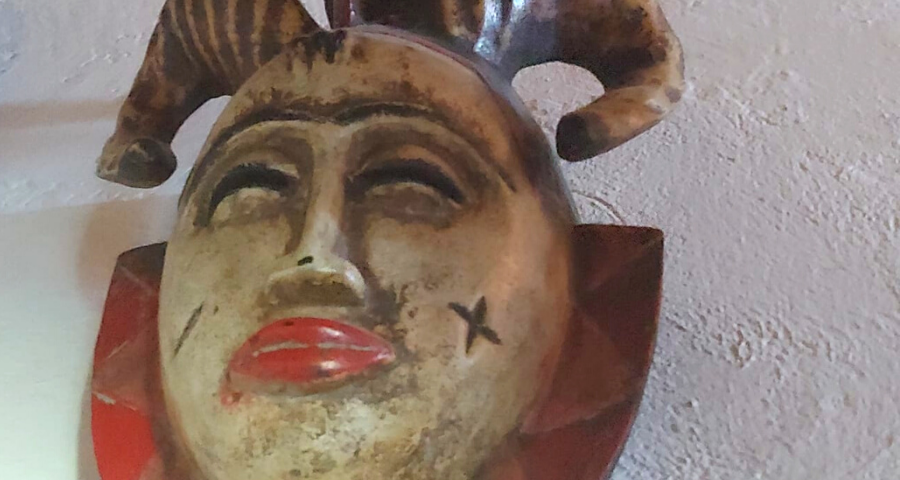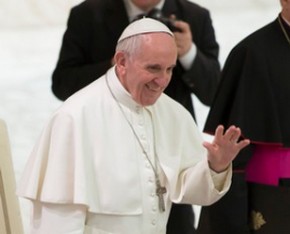The soul and the harp/24 – Rather than a simulacrum of God, each human being is a spark of his mystery
By Luigino Bruni
Published in Avvenire 13/09/2020
The question how I came to such an archaic subject has not yet been answered. Various circumstances influenced it, interconnected through the years, with the passing of time. Ripeness is all. As a man and as an artist I had to somehow find myself in a state of "receptivity"
Thomas Mann, Appendix, Joseph and his brothers
There are themes of great human and religious significance involved in the prohibition of reproducing images of God. Psalm 115 reveals some of them.
We should thank the Bible if only for having guarded the intimate mystery of God over the centuries, and protected from our theological and ideological manipulations. The Babylonian exile was not only the place and time where some of the greatest biblical books were born and where immense prophets such as Ezekiel and the Second Isaiah spoke and wrote. That exile also generated some of the most beautiful psalms. Songs and prayers flowed from the soul of a humiliated people, offended in their national identity, struck at the heart of their religion. The exile was many things, but it was above all a great religious test. Finding themselves in a land rich in religion, surrounded by many gods each with its own sanctuary, represented by shining statues and carried in spectacular processions, forced Israel to rethink their faith deeply. The harsh biblical anti-idolatrous controversy also developed during the exile. The absence of the temple and the images of YHWH gave birth to the question that the Babylonians ironically addressed to the Jews: "Where is your God?"
In those ancient cultures, a God without his own place or sanctuary was a nonexistent god. The great biblical idea prohibiting any representation of God came to maturity as an answer to that terrible question (Exodus 20,4). A single ban, based on a decisive event: «You saw no form of any kind the day the Lord spoke to you at Horeb out of the fire» (Deuteronomy 4,15). The experience of the encounter with YHWH had been the encounter with a voice, with something real but invisible. Neither Abraham nor Moses nor the prophets actually saw the image of God - Moses saw it pass from behind, as if to say that he did not see it. Instead, they heard his voice, his whisper (Elijah). Hence, every alleged image of God can only be a false one, because that voice cannot be represented.
«Why do the nations say, “Where is their God?” Our God is in heaven; he does whatever pleases him. But their idols are silver and gold, made by human hands. They have mouths, but cannot speak, eyes, but cannot see. They have ears, but cannot hear, noses, but cannot smell. They have hands, but cannot feel, feet, but cannot walk, nor can they utter a sound with their throats» (Psalm 115,2-7). The fight against idolatry of the Bible has two components: an external criticism of the images of the gods of other peoples and an internal criticism of Israel, which has always been tried to recreate images of its God. The criticism of Psalm 115 seems, at first glance, to be completely centered on the first component of idolatry, that is the ridicule of other people who adore silly pieces of wood. This, however, is not the most interesting and profound dimension of the biblical controversy, because if it had been formulated in the presence of the Babylonian priests and prophets, they could have replied that those images were only symbols and signs of their gods who, like the God of Israel, really "dwelt in heaven". They could have responded with arguments similar to those with which Catholics defended statues of saints from the iconoclastic fury of some movements of the Protestant Reformation. The biblical criticism of images is present to this day, when we tend to forget that statues and icons are the signs of a God that we do not see and that we recognize merely from a voice pronouncing a name: "Mary".
The second criticism, aimed at the Jews, is of far greater importance. Israel has been accompanied throughout its biblical history by the temptation to have a simple religion like that of other peoples, with the same statues and the same processions, with the same natural fertility rites. The golden calf under Mount Sinai is condemned and then destroyed by Moses because it is the image of their God - the name that the people gave to the golden calf was in fact: YHWH. Representing an invisible God can only produce the wrong images. The most important anti-idolatrous school of thought is hence the one that Israel developed not to criticize other people, but as a mechanism of self-protection of its own faith. A faith that was not only threatened (especially before the exile) by attempts to import foreign gods (the cults of Baal or the goddess "wife" of YHWH) and to place them in their temple, but from the temptation to simplify their faith. The most important idolatry is in fact a religious reductionism that becomes anthropological reductionism.
The background to all the anti-idolatrous reflection in the Bible is in fact Genesis, and in particular those wonderful verses on Adam created in the "image of God" (Genesis 1,27). If we humans are the image of God, if we reduce God to an inevitably wrongful image of him, then we are reducing ourselves even more, ending up as a reduced image of that reduced image. Keeping YHWH up there, in the sky, invisible but speaking to us, means holding the dignity of both women and men high; all the while saying that the image of God that we carry impressed inside belongs to the kingdom of the spirit and being, and not to that of appearing. Whoever sees a man, a woman or a child, does not see a statue of God, but a true spark of his invisible mystery. The truly essential aspect of the image is invisible to the eye. Sight is not the sense that is needed to truly see this image. The beginning of the Psalm is particularly important: «Not to us, Lord, not to us but to your name be the glory, because of your love and faithfulness» (Psalm 115,1). A theme very dear to the Bible returns: the Name. As the Christian era approached, the Jews spoke less and less of the name YHWH (Exodus 20,7). While often writing the Tetragrammaton (YHWH) they really pronounced "Adonai", Lord. The Name YHWH was pronounced by the priests and only in the temple, perhaps only on the feast of Kippur. However, with the second destruction of the temple in 70 AD the memory of the pronunciation of the Name revealed to Moses was also lost. But what lies behind the Name?
Those exiles felt a great nostalgia for the experience of God they once had at home, when YHWH still "lived" in his now destroyed temple. They struggled to rediscover the experience of the sacred without their sacred place. This tremendous effort of their, however, generated even more extraordinary things. First of all, the absence of the sacred temple invented the concept of a sacred time: Shabbat was born. Time became more important than space. The Shabbat became the temple of time, and remains one of the greatest prophecies found in the Bible to this day - without a new culture of Shabbat we will never get out of the environmental and social crises of capitalism, the anti-Shabbat. While in exile, they also discovered a new dimension of the Name, which they learned thanks to the prophets acting as sentinels during exile (there is a lot of Ezekiel in Psalm 115: «This is what the Sovereign Lord says: I acted for My name’s sake»: (Ezequiel 20,5-9).
With that first verse, the psalmist is saying to God: I am not asking you to show your glory for us here. No, we have not earned this (the people lived in exile as a punishment for their infidelities). Instead, show your glory out of faithfulness to yourself, out of faithfulness to your Name. Do not do it for us: do it for yourself. This is one of the most beautiful expressions of gratuitousness found in faith. The psalmist knew that we cannot take our advantage out of our prayers, but we can pray to God to not take it into account. Perhaps this is the maximum possible gratuitousness under the sun: God, I cannot set aside my own interests, you know this, but please do not take them into account while I pray to you. Here faith clearly distinguishes itself from commerce, prayer from magic. We pray to God for God. One of the greatest religious and human fruits born out of the exile experience: the gratuitousness of prayer, man's ability to transcend himself, to be greater than his own needs.
A final comment on idolatry. The biblical prohibition to represent divinity with statues or drawings generated as collateral beauty a great production of literary and narrative images about God. The Bible forbade ‘plastic’ images of God, but it lead to the production of an endless quantity of intellectual images. Rabbinic Midrash, Jewish legends, and then the immense, both in quality and in quantity, literature inspired by biblical episodes. That limit to the image impoverished the Jewish world of visual arts but, like Leopardi’s Hedge, it generated an infinite wealth of literature. God was not painted, but was deeply thought about and beautifully narrated. Greek philosophy thought above all of man, biblical wisdom pondered above all about God. But the Bible, perhaps, was not sufficiently aware of the great danger of intellectual representations of God (L.A. Schoekel). The Bible forbade the image (and the pronunciation of the name) of God to save God in his mystery and intimacy, to protect him from our many manipulations. The most powerful images, however, are not the visual ones, but the ones in our minds. Idolatry does not only manifest itself though figures, statues or puppets, the most pernicious puppets are the intellectual ones. That word, heart and profound soul of the Bible, is much more capable than any human hand to produce fetishes, and creating golden calves.
The real name of intellectual idolatries is ideology. And among the very harmful ideologies we find the religious ones, because they often forget the prohibition of "making oneself the image" of God. The temptation of theology is to violate the commandment of the prohibition of making images of God. A good scientist or a good economist know that the model they use to describe the world is not the actual world, (for example, perfect competition is not the actual market). A theologian, on the other hand, (except the very great, among them St. Thomas), is easily tempted to believe that the models he built to describe God are in fact the actual image of God. Therefore, once they have built a model thought of as an image, theologians believe that they have captured God within that image. We killed thousands of people, and burned heretics because they were too sure that the idea we had created of God was his image. Only by recovering the biblical sense of the prohibition of image to preserve the mystery of God, will we be able to learn the art of dialogue with those who have other ideas of God.
The last line of criticism of idols is both evocative and very beautiful: «Those who make them will be like!» (Psalm 115,8). Over time, we have learned that the subjunctive ("become") can be replaced by the indicative: becomes. We become the objects and images we adore. Without realizing it, we are becoming more and more similar to our goods, and increasingly similar to the idol of consumption. The Psalm ends with a splendid series of blessings. They are for us, we will not miss a single one: «May the Lord cause you to flourish, both you and your children. May you be blessed by the Lord, the Maker of heaven and earth. The highest heavens belong to the Lord, but the earth he has given to mankind» (Psalm 115,14-16).
Download pdf article in pdf (357 KB)








